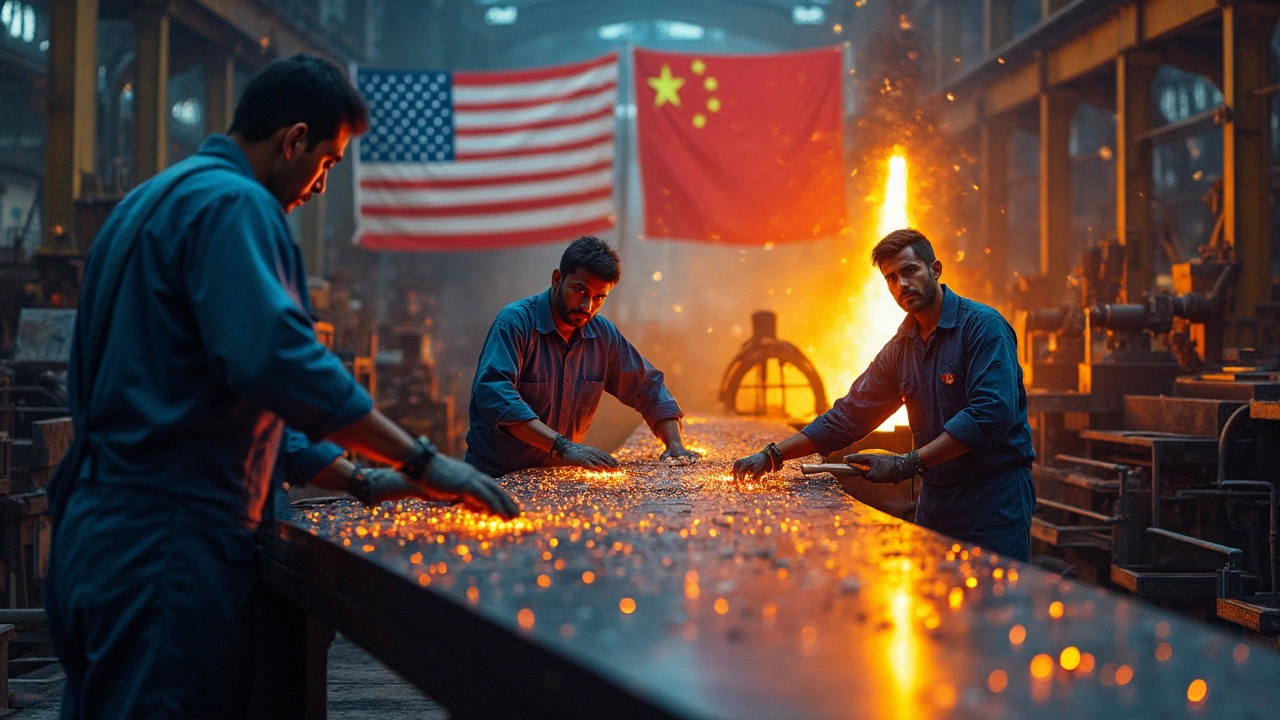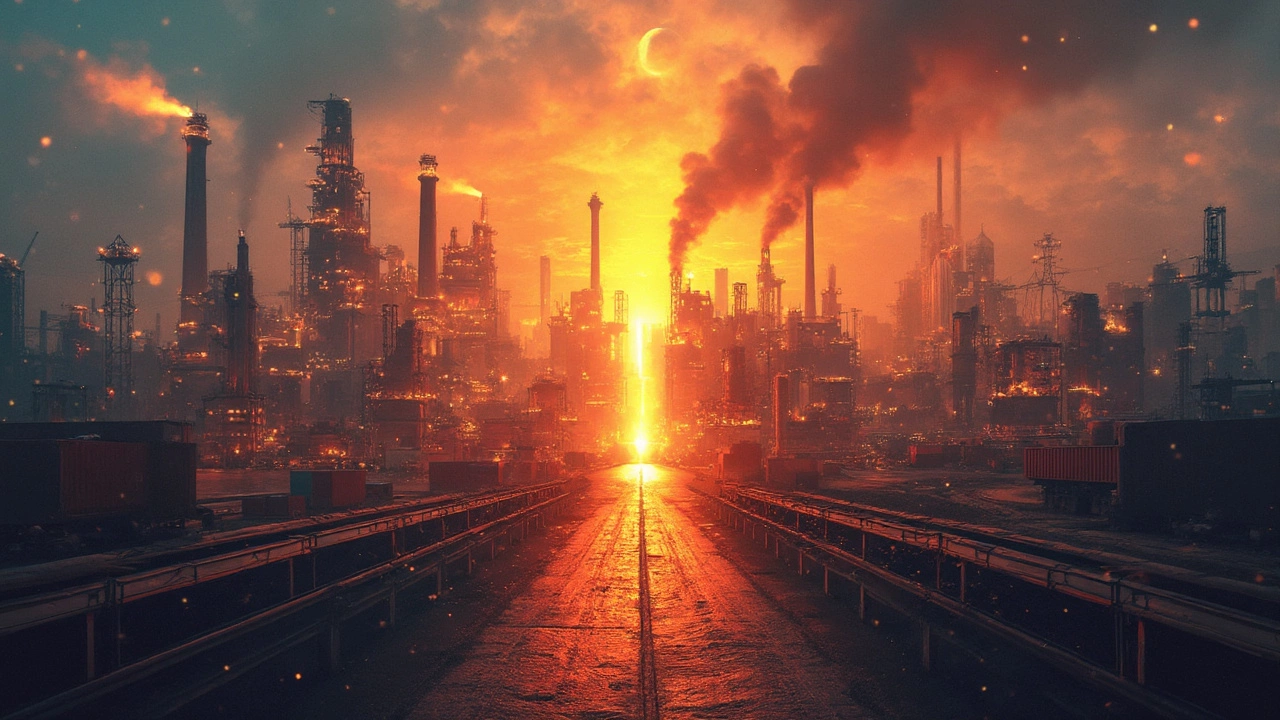- Start Manufacturing Your Idea: Step‑by‑Step Guide Oct 8, 2025
- Which car brands are made in India? Oct 27, 2025
- Understanding Micro Small Scale Industry: Key Insights for Aspiring Entrepreneurs Jan 7, 2025
- Which Country Has the Highest Demand for Indian Clothes? Dec 1, 2025
- Best Plastic Manufacturing Companies in 2025 Nov 8, 2025
US Steel: Leading Suppliers, Key Cities & Industry Insights
When you hear "US steel," you probably picture massive mills, humming furnaces, and a legacy that goes back over a century. But the modern landscape is a blend of legacy players and new tech‑driven firms. Below you’ll get a fast‑track guide to the biggest suppliers, the top production cities, and the trends that matter right now.
Top US Steel Suppliers
The biggest name on the list is Nucor. With more than 30 plants spread across the country, Nucor leads in both volume and innovation. They use electric‑arc furnace (EAF) technology, which cuts energy use and keeps carbon footprints lower than traditional blast furnaces.
Close behind is United States Steel (U.S. Steel). Their iconic Gary, Indiana complex still produces high‑grade flat‑rolled steel for automotive and construction markets. While they’ve faced ups and downs, recent investments in advanced high‑strength steel keep them competitive.
Another heavyweight is Steel Dynamics. Their focus on specialty steel for the energy and transportation sectors has earned them a solid niche. They’ve also been expanding capacity in Indiana and Ohio, adding modern rolling mills that boost efficiency.
If you’re looking for a supplier that blends domestic production with global reach, ArcelorMittal USA is worth a glance. Though the parent company is European, the US arm runs several key facilities that serve automotive OEMs and heavy‑equipment makers.
Small‑to‑mid size firms like Commercial Metals Company and AK Steel (now part of Cleveland-Cliffs) round out the list. They specialize in customized products—think sheet steel for appliances or precision tubes for aerospace.
Steel Hubs in the United States
Historically, Pittsburgh earned the nickname “Steel City,” and for good reason. Its mill complexes still produce specialty steel grades used in aerospace and defense. The city’s shift toward high‑value products has helped keep it relevant even as other regions grew.
But Pittsburgh isn’t alone. The Midwest, especially Indiana and Ohio, hosts a dense cluster of EAF plants that supply the auto industry. Cities like Gary, Indiana, and Cleveland, Ohio, churn out flat‑rolled and structural steel that builds everything from bridges to skyscrapers.
Out west, Texas is emerging as a surprising steel hub. New iron‑making facilities there tap into cheap natural gas for EAF processes, making the region attractive for energy‑intensive steel production.
On the Gulf Coast, Alabama’s Port of Mobile has become a strategic export gateway. Steel produced in the Southeast can quickly reach overseas markets, giving US exporters a logistical edge.
So, what does all this mean for you? If you need raw steel, start by checking the supplier’s production method—EAF versus blast furnace—as it affects cost, lead time, and environmental compliance. For location‑specific projects, pick a supplier near your plant to cut transportation costs.
Finally, keep an eye on two big trends shaping US steel: the push for greener production and the rise of advanced high‑strength steel (AHSS). Companies that invest in low‑carbon technologies or develop steel that’s both lighter and stronger are likely to win contracts in automotive, aerospace, and renewable‑energy sectors.
Whether you’re a procurement manager, a small‑business owner, or just curious about how the metal that builds our world gets made, these insights give you a solid starting point. The US steel scene is still evolving—stay tuned, ask the right questions, and you’ll be ready for the next wave of opportunities.
Does China Buy Steel from the US? Shocking Facts Steel Manufacturers Should Know
- Aarav Sekhar
- May 21, 2025
This article digs into whether China, a steel giant, actually buys steel from the US. It unpacks why steel trade flows the way it does, which types of steel get shipped, and how tariffs and politics shape the industry. If you run or work in steel manufacturing, you’ll get practical tips on navigating international markets and what this tension means for your business. Get ready for some myth-busting and practical insights on a topic the news rarely explains clearly.
Why Is Chinese Steel Cheaper Than US Steel?
- Aarav Sekhar
- May 12, 2025
Chinese steel is almost always cheaper than steel made in the US, and it's not just about lower wages. This article breaks down the real reasons behind the price gap, from government policies to raw material access. If you run or work in steel manufacturing, you'll see how these factors hit your bottom line. Get practical insights on navigating global steel prices. Find out what makes Chinese steel so competitively priced and where US steel plants are really up against it.

